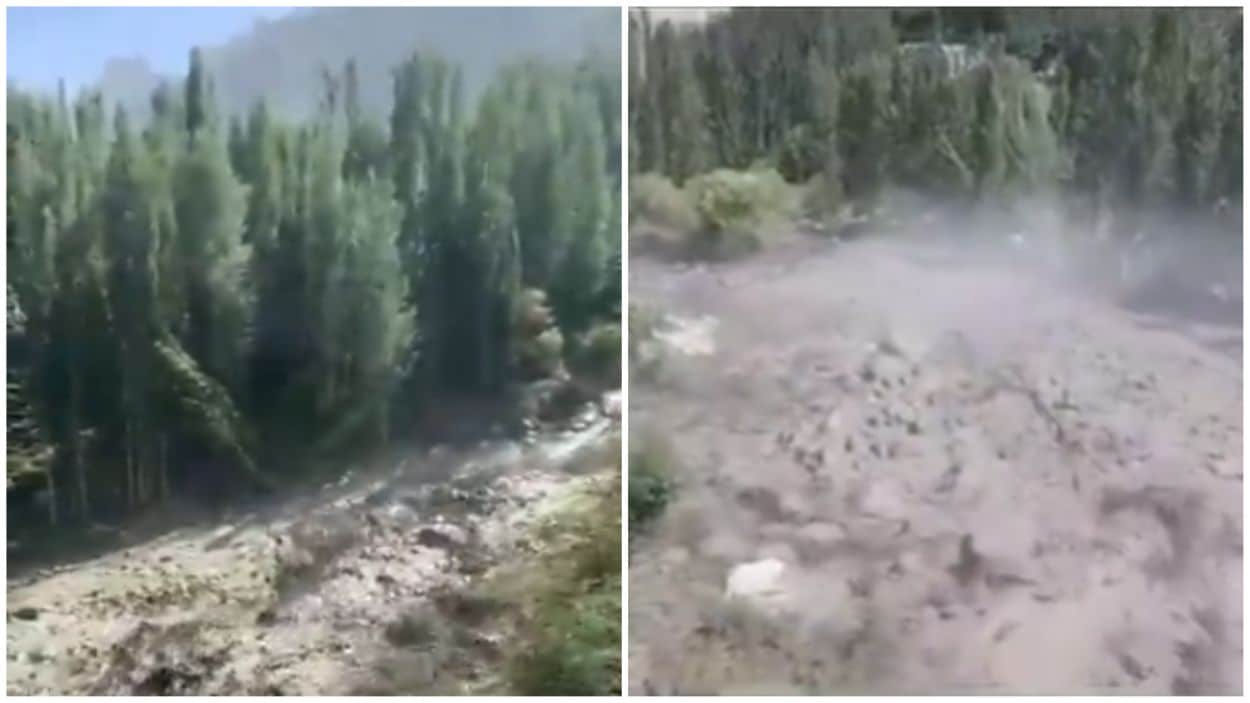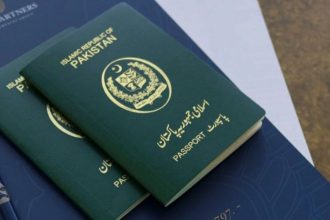On August 12, 2025, Gilgit-Baltistan experienced severe flooding and landslides due to an outburst from the Shispar Glacial Lake.
The disaster particularly affected the areas of Gulmit, Gojal, and Shigar. Although more than 50 workers managed to survive the raging waters of the Hunza River, the floods submerged agricultural land, uprooted trees in Shigar, and damaged numerous homes in the village of Hassanabad. As a result, urgent evacuations and relief efforts became necessary.
The Shispar Glacier’s glacial lake outburst flood (GLOF) eroded parts of the Karakoram Highway (KKH) near Hassanabad, disrupting connectivity between Gilgit and Hunza. Landslides blocked Shahrah-e-Resham, stranding passengers, with restoration work planned soon. A separate landslide during Ferry Meadows track repairs in Gilgit killed two and injured two, contributing to a death toll of 15, according to spokesperson Faizullah Firaq.
دریائے ہنزہ پھر بپھر گیا۔۔۔ سیلابی ریلوں نے تباہی مچادی#RiverHunza #ExpressNews #FLood #BreakingNews #LatestUpdates #Governmentofgilgitbaltistan pic.twitter.com/MNkRLTpWmB
— Express News (@ExpressNewsPK) August 12, 2025The region, known for its 7,200 glaciers, faces heightened risks from climate change, with heatwaves and monsoon rains accelerating glacier melt. The GBDMA reported damages worth Rs20 billion, affecting 500 homes, crops, and roads across 37 villages, including Diamer and Skardu. The Hunza administration is intensifying relief operations, with temporary shelters and medical aid deployed.
The Gilgit-Baltistan government has evacuated residents, opened alternative KKH routes, and vacated 107 schools for shelters. Authorities warn of further risks as monsoon activity continues through September, urging caution and long-term disaster resilience measures to protect infrastructure like the China-Pakistan Economic Corridor.
Read: Landslide in Gilgit Kills Eight Volunteers, Rescue Efforts Continue
The 2025 floods and landslides in Gilgit-Baltistan highlight the severe impact of climate-driven disasters, threatening lives, agriculture, and critical infrastructure like the KKH.






